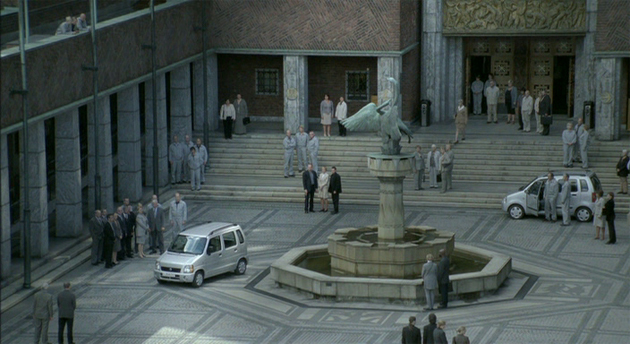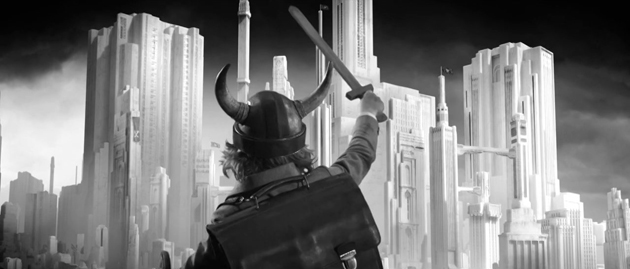Vicious werewolves, lecherous trolls, dark demons, stomping giants and other such monstrosities have classically represented evil intention for centuries now. And naturally, at the other end of the spectrum has lied the proud ‘knight in shining armour’, an exemplary handsome figure bearing great strength and light, serving and protecting the good. Philosophers, psychoanalysts and thinkers dating back to the Enlightenment (and throughout the history of critical thought) have of course repeatedly called these oversimplified representations into doubt. Post-colonial theorists further revealed their true ideological nature: indoctrinating the masses with ideal images of ‘citizenship’ or perversely stigmatising the ‘other’ as an undesirable threat.

It’s perhaps not so ironic then that some storytellers have developed counter representations of evil in the direct inverse way, exposing the perfect knight in shining armour as a monster. In American Psycho Bret Easton Ellis presents Patrick Bateman as the archetypal inverted monster. Perfect on the outside, a psychopath on the inside.
Architecturally, this inversion is best characterized by the ‘perfect city’, a functionally flawless synthesis of culture and corporation. The film Den Brysomme Mannen (The Bothersome Man) captures this synthesis strikingly in its depiction of a clinically pristine unhomely modern city. In this parallel disaffected universe no one recognises emotions (look up ‘alexithymia’). No one can taste anything or feel anything; everyone just goes on with their daily routines, seemingly content and tranquil.
Indeed, the inverted ‘perfect city’ has become a recurring motif/trend in recent popular culture and can be found in music videos (Woodkid’s Run Boy Run), videogames (Mirror’s Edge), TV series (Mad Men) and many other movies (THX 1138, The Truman Show). Architectural theorists such as Rem Koolhaas have interrogated the controlling ‘Program’ of the city – an approach championed by modernist architects such as Louis Sullivan (father of skyscrapers) who supported that form should always follow function.

It has become abundantly clear that in today’s age free market corporations run the world, not governments. Everything is becoming a packaged good to be marketed and sold, including our lives. The polished ‘perfect’ aesthetic has become symbolic of this global market order. Global movements and riots are erupting in resistance. It’s no wonder, then, that we take pleasure in watching such cities collapse.
Peter Eramian
